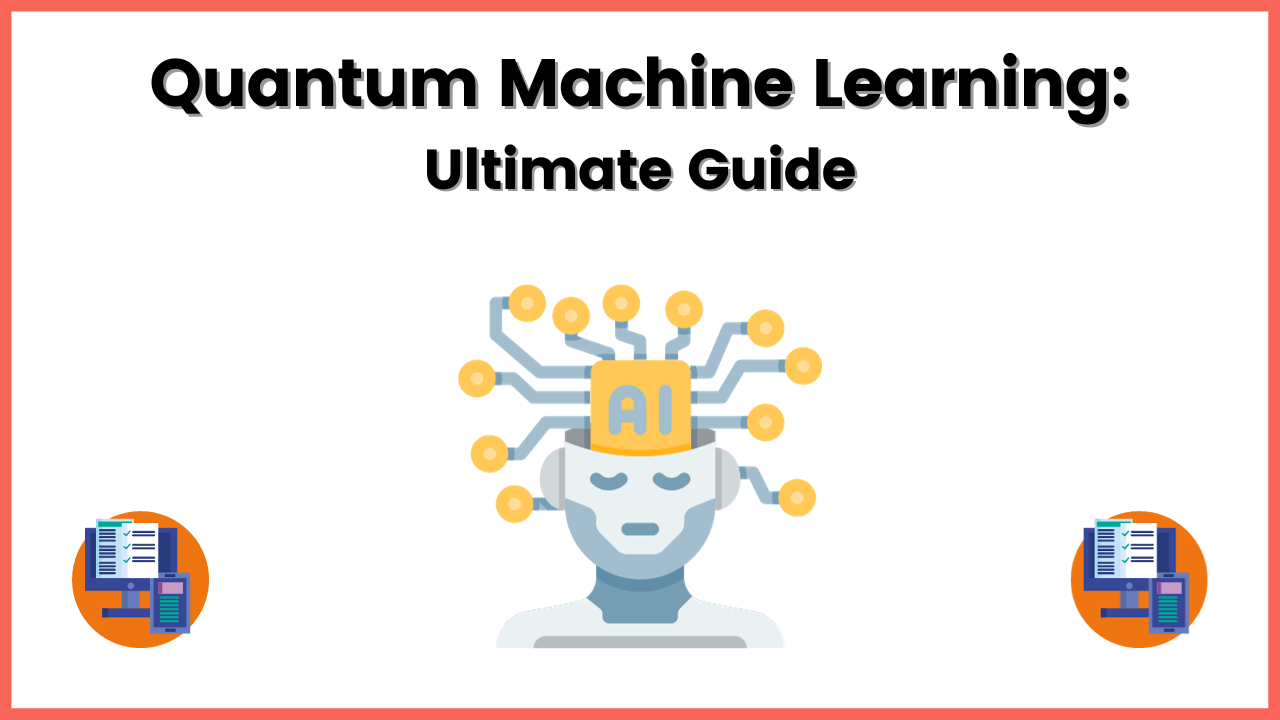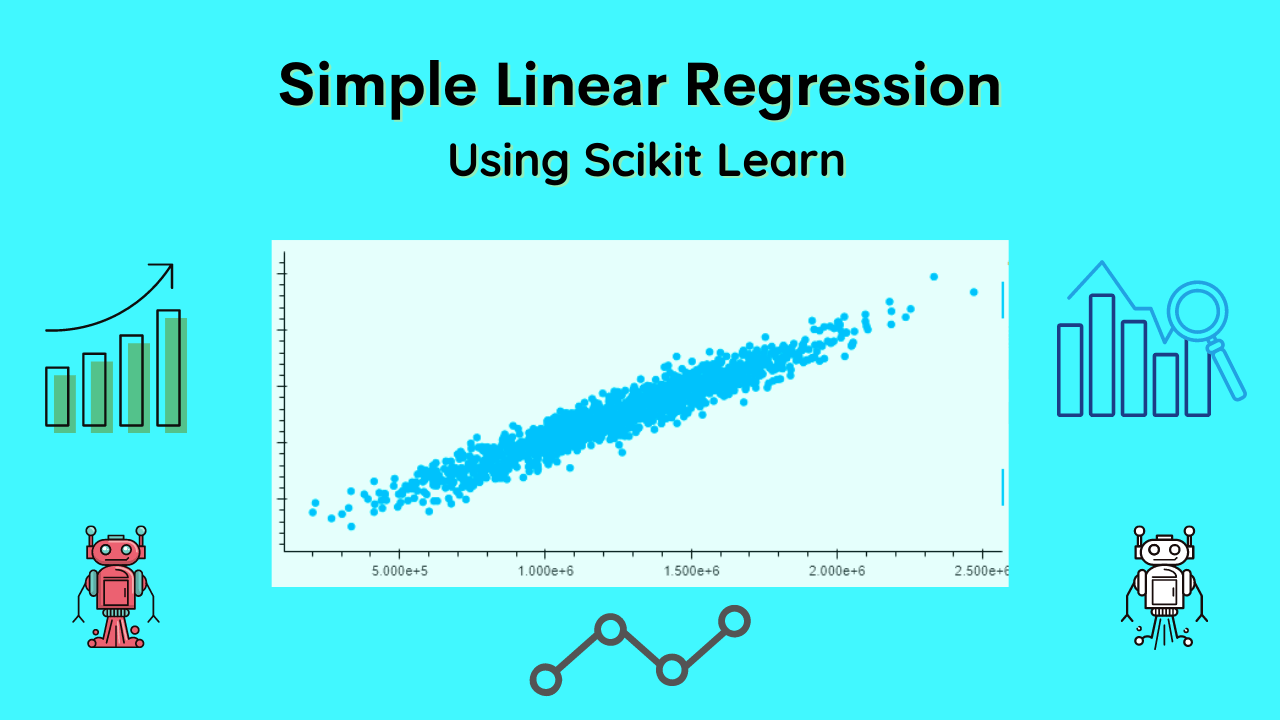In this guide, we will explore and discuss about the Quantum Machine Learning to show the Gap Between Quantum Computing and AI.
Quantum computing has emerged as a revolutionary technology with the potential to disrupt various industries, including machine learning.
Quantum machine learning (QML) represents the synergy of quantum computing and artificial intelligence (AI), promising to solve complex problems more efficiently and accurately than classical computing.
In this article, we will delve into the world of quantum machine learning, exploring its fundamental principles, applications, and the challenges it faces.
Related Article: What is a Statistical Model? | Statistical Learning Process.
What is Quantum Machine Learning?
Quantum machine learning combines the principles of quantum computing with the algorithms and techniques of traditional machine learning.
Quantum Machine Learning (QML) is an interdisciplinary field at the intersection of quantum computing and artificial intelligence (AI).
It harnesses the unique properties of quantum mechanics, such as superposition and entanglement, to enhance machine learning algorithms and solve complex problems more efficiently than classical computers.
QML involves encoding classical data into quantum states, utilizing quantum gates to perform computations, and capitalizing on quantum speedup to explore multiple solutions simultaneously.
While still in its early stages, QML holds the promise of revolutionizing various industries by addressing challenging tasks in areas like drug discovery, finance, cryptography, and optimization, where classical computing falls short.
How Quantum Machine Learning Works?
Quantum Machine Learning (QML) combines principles from quantum computing and machine learning to solve complex problems more efficiently than classical computers.
Key Components:
To understand how QML works, let’s break down its key components and processes:
- Quantum Bits (Qubits): At the heart of quantum computing and quantum machine learning are qubits, which are the quantum analogs of classical bits. While classical bits can be either 0 or 1, qubits can exist in superpositions of these states, allowing them to represent multiple possibilities simultaneously. This property enables quantum computers to explore a vast number of potential solutions in parallel.
- Quantum Gates: Quantum gates are the fundamental building blocks of quantum circuits, just as logic gates are for classical circuits. Quantum gates operate on qubits, manipulating their states. These gates can perform operations like flipping qubit states, creating entanglement between qubits, and implementing complex mathematical transformations.
- Quantum Superposition: Qubits can exist in a superposition of states, meaning they can be in a combination of 0 and 1 simultaneously. This property is harnessed in QML to explore multiple solutions to a problem at once. It allows quantum algorithms to examine a large search space more efficiently than classical algorithms.
- Quantum Entanglement: Entanglement is a quantum phenomenon where the state of one qubit becomes dependent on the state of another, even when separated by vast distances. In QML, entanglement can be used to create correlated qubits that provide computational advantages in specific algorithms.
Key Processes in Practice:
Now, let’s explore how QML works in practice:
1. Quantum Data Encoding:
In QML, classical data must be encoded into a quantum format that qubits can process. Quantum data encoding techniques are used to map classical data to quantum states. This includes quantum feature maps and quantum circuits designed to represent data efficiently.
2. Quantum Algorithms:
Quantum machine learning algorithms leverage the quantum properties mentioned earlier to perform computations that are exponentially faster than classical counterparts for specific problems. Some of the most notable quantum algorithms used in QML include:
- Grover’s Algorithm: Grover’s algorithm provides a quadratic speedup for unstructured search problems. It can be used in tasks like database search and optimization.
- Quantum Support Vector Machine (QSVM): QSVM is a quantum version of the classical support vector machine (SVM) algorithm. It can be used for classification tasks and offers potential speedup.
- Variational Quantum Algorithms: These algorithms combine quantum circuits with classical optimization techniques, allowing for hybrid approaches to solving problems.
- Quantum Neural Networks (QNNs): QNNs are quantum analogs of classical neural networks, utilizing quantum gates and qubits as processing units. They have the potential to enhance certain machine learning tasks.
3. Quantum Speedup:
QML’s most significant advantage is its potential for exponential speedup over classical algorithms for specific problems. This speedup arises from the ability to explore multiple solutions in parallel, thanks to quantum superposition and interference effects.
4. Quantum Measurement:
In QML, after quantum operations are performed, the quantum state is measured to obtain a classical outcome. This measurement collapses the superposition, yielding a specific result. The outcome of the measurement provides the solution or information needed for the given problem.
5. Quantum Error Correction:
Quantum computers are susceptible to errors due to factors like decoherence and noise. To make quantum computations reliable, error correction techniques are employed. Quantum error correction codes help maintain the integrity of quantum information throughout the computation.
6. Quantum Hardware and Simulators:
QML can be implemented on actual quantum hardware or simulated on classical computers using quantum simulators. Quantum hardware, such as quantum processors developed by companies like IBM, Google, and Rigetti, is used to run quantum algorithms in real-world scenarios.
Applications of Quantum ML
Quantum machine learning has a broad range of applications across various domains. Here are some notable areas where QML is making an impact:
1. Drug Discovery:
Quantum ML can analyze complex molecular structures, enabling drug discovery processes to be faster and more accurate.
It can predict the properties of molecules, optimize drug designs, and assist in the search for novel therapies.
2. Finance:
In the financial sector, QML can enhance risk assessment, portfolio optimization, and fraud detection.
Quantum algorithms can efficiently solve complex financial equations, providing valuable insights for investment strategies.
3. Optimization Problems:
QML excels in solving optimization problems that classical computers struggle with. Examples include supply chain optimization, logistics planning, and traffic routing.
4. Artificial Intelligence:
Quantum machine learning can improve AI models by accelerating training processes and enhancing pattern recognition.
Quantum neural networks and quantum support vector machines are examples of quantum-based AI models.
5. Cryptography:
Quantum computing poses a threat to classical encryption algorithms, but it also offers opportunities for quantum-safe cryptography.
QML can be used to develop secure encryption methods resistant to quantum attacks.
Challenges in Quantum ML
While the potential of quantum machine learning is enormous, it faces several significant challenges:
1. Hardware Limitations: Quantum computers are still in the nascent stages of development, with limited qubit counts, high error rates, and significant noise. Building reliable quantum hardware is a critical challenge.
2. Quantum Error Correction: Quantum computers are susceptible to errors due to their quantum nature. Developing effective quantum error correction codes is essential for making quantum computations more reliable.
3. Quantum Advantage: Identifying problems where quantum ML provides a genuine advantage over classical computing is an ongoing challenge. Not all problems benefit from quantum acceleration.
4. Skill Gap: Quantum ML requires expertise in both quantum computing and machine learning, creating a skill gap in the workforce. Training quantum data scientists and engineers is crucial for its advancement.
Quantum Machine Learning’s Future
The future of quantum machine learning holds immense promise. As quantum hardware matures and algorithms improve, we can expect significant breakthroughs in various fields. Here are some future possibilities:
1. Quantum AI: Quantum machine learning will lead to the development of more advanced AI models capable of handling larger datasets and more complex tasks. This could revolutionize natural language processing, image recognition, and autonomous systems.
2. Quantum-Safe Cryptography: As quantum computers become more powerful, the need for quantum-safe cryptography will become increasingly urgent. It will play a pivotal role in developing secure encryption methods.
3. Quantum Computing as a Service (QCaaS): Just as cloud computing services transformed the IT landscape, quantum computing as a service may become a reality, allowing organizations to access quantum resources without the need for in-house quantum hardware.
5. Industry Adoption: Industries such as pharmaceuticals, finance, and logistics will embrace quantum machine learning to gain a competitive edge. We can anticipate more practical applications and real-world implementations.
6. Interdisciplinary Research: Collaboration between quantum physicists, computer scientists, and domain experts will drive innovation in quantum machine learning. Cross-disciplinary research will lead to novel solutions for complex problems.
Conclusion
Quantum machine learning represents a fascinating convergence of quantum computing and artificial intelligence.
While it is still in its infancy, QML holds tremendous potential to revolutionize various industries, solving complex problems faster and more accurately than classical computing.
As quantum hardware matures and algorithms improve, we can look forward to a future where quantum machine learning reshapes the landscape of AI and computation, offering solutions to previously insurmountable challenges.
However, it is essential to address the current limitations and invest in research and education to realize the full potential of this groundbreaking technology.
Related Article: Top 10 Python Libraries for Machine Learning
References:
Research in the field of Quantum Machine Learning (QML) is a dynamic and rapidly evolving area, with numerous academic papers, books, and resources available.
Below, I will provide you with a selection of notable research papers and books on Quantum Machine Learning:
Research Papers:
- “Quantum Machine Learning” by Jacob Biamonte, Peter Wittek, Nicola Pancotti, Patrick Rebentrost, Nathan Wiebe, and Seth Lloyd. (Link) This foundational review paper provides an overview of quantum machine learning algorithms, techniques, and applications.
- “Quantum-Assisted Learning of Hardware-Embedded Probabilistic Graph Models” by Vedran Dunjko, Jens Jakob W. H. Sørensen, and Mikkel V. Larsen. (Link) This paper explores the application of quantum computing to probabilistic graphical models.
- “Quantum Neural Networks” by Jacob Biamonte, Ville Bergholm, Peter Wittek, Nicola Pancotti, Patrick Rebentrost, Nathan Wiebe, and Seth Lloyd. (Link) This paper introduces the concept of quantum neural networks, providing a bridge between classical and quantum machine learning.
- “Quantum Machine Learning for Electronic Structure Calculations” by Edward F. Valeev, et al. (Link) This paper discusses how quantum computing can be applied to electronic structure calculations in quantum chemistry.
- “A Quantum-inspired Classical Algorithm for recommendation Systems” by Francesco Santandrea, et al. (Link) This paper explores quantum-inspired algorithms for recommendation systems.
Books:
- “Quantum Computing: A Gentle Introduction” by Eleanor Rieffel and Wolfgang Polak. This book offers a gentle introduction to quantum computing, including its relevance to machine learning.
- “Quantum Computing for Computer Scientists” by Noson S. Yanofsky and Mirco A. Mannucci. This comprehensive book provides insights into quantum algorithms and their applications in computer science, including machine learning.
- “Quantum Machine Learning: What Quantum Computing Means to Data Mining” by Peter Wittek. This book focuses on the intersection of quantum computing and machine learning, explaining quantum algorithms and their implications for data mining.
- “Quantum Computing: From Linear Algebra to Physical Realizations” by Mikio Nakahara and Tetsuo Ohmi. This book offers a deep dive into the mathematical foundations of quantum computing, which are essential for understanding quantum algorithms in ML.
Online Resources:
- arXiv.org: The arXiv preprint server is an excellent resource for finding the latest research papers in quantum machine learning. You can search for relevant papers and stay updated on new developments in the field. arXiv Quantum Machine Learning
- Quantum AI Community: Various organizations and communities, such as IBM Quantum, Google Quantum AI, and Rigetti, offer resources, tutorials, and open-source tools for quantum machine learning. Explore their websites and documentation for valuable insights.
Remember that the field of quantum machine learning is highly dynamic, and new research is continuously emerging.
Staying updated with the latest literature and resources is essential for gaining a comprehensive understanding of this exciting and evolving field.

Meet Nitin, a seasoned professional in the field of data engineering. With a Post Graduation in Data Science and Analytics, Nitin is a key contributor to the healthcare sector, specializing in data analysis, machine learning, AI, blockchain, and various data-related tools and technologies. As the Co-founder and editor of analyticslearn.com, Nitin brings a wealth of knowledge and experience to the realm of analytics. Join us in exploring the exciting intersection of healthcare and data science with Nitin as your guide.










